
Honeypot ants, also called honey ants, are ants which have specialised workers that are gorged with food to the point that their abdomens swell enormously. Other ants then extract nourishment from them, through the process of trophallaxis. They function as living larders. Honeypot ants belong to any of several genera, including Myrmecocystus and Camponotus. They were first documented in 1881 by Henry C. McCook, and described further in 1908 by William Morton Wheeler.

Myrmecocystus is a North American genus of ants in the subfamily Formicinae. It is one of five genera that includes honeypot ants. Worker ants keep and tend plerergates, which are other ants that store large quantities of nutritious fluid in their abdomens to feed the colony during famine times. Some species engage in highly territorial tournaments, which can result in intraspecific slavery. During the raids, they carry off larvae, workers, and plerergates.

Myrmecocystus mimicus is a North American species of ant in the genus Myrmecocystus. The species is widely distributed, from Kansas south to Texas and Mexico, and west to California.

Formica comata is a species of ant in the family Formicidae.

Formica perpilosa is a species of ant in the family Formicidae.

Pseudomyrmex simplex is a species of ant in the family Formicidae.
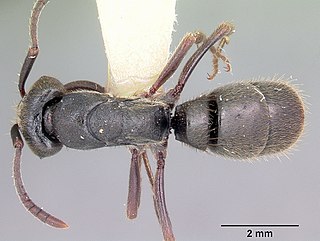
Pachycondyla harpax, the rapacious panther ant, is a species of ant in the family Formicidae.

Pogonomyrmex comanche, the Comanche harvester ant, is a species of ant in the family Formicidae.

Myrmica rugiventris is a species of ant in the family Formicidae.
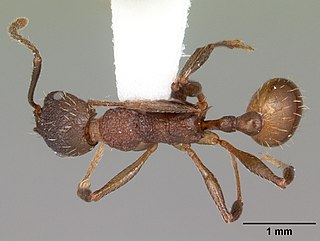
Aphaenogaster mariae is a species of ant in the family Formicidae.

Myrmecocystus wheeleri is a species of ant in the family Formicidae.
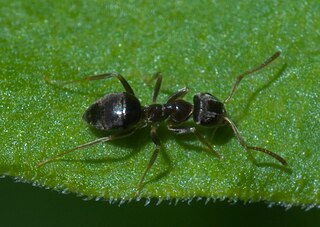
Lasiini is a tribe of ants in the family Formicidae. There are about 10 genera and more than 450 described species in Lasiini.

Hypoponera opacior is a species of ant in the family Formicidae.
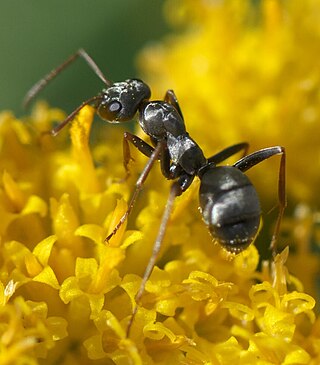
Formica podzolica is a species of ant in the family Formicidae.

Formica integra is a species of ant in the family Formicidae.

Camponotus tortuganus is a species of ant in the family Formicidae.
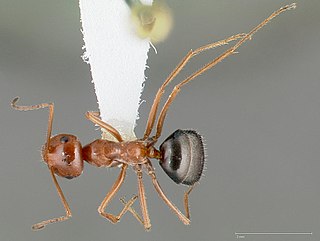
Myrmecocystus kennedyi is a species of ant in the family Formicidae.

Monomorium emarginatum is a species of ant in the family Formicidae.

Myrmecocystus mendax is a species of ant in the family Formicidae. It occurs in Mexico and Southwestern United States.

Myrmecocystus yuma is a species of ant native to the southwestern United States and a small part of Northern Mexico. This species, like most in the genus of Myrmecocystus, create worker repletes.



















